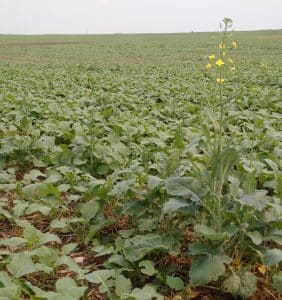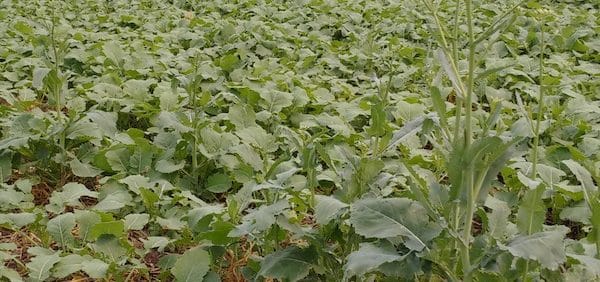
Crop staging comes into play for herbicide, insecticide and fungicide timing. So crops with plants at various stages — some at flowering, some barely at the bud stage, for example — present a challenge when deciding when to spray.
Herbicide. Patchy emergence for various reasons has created a wide range of stages in some crops. Labels provide specific windows for application based on crop staging — for reasons of crop safety and herbicide residue on harvested seed. If thin crop or multi-stage crop could benefit from another herbicide application, assess the crop stage for the majority of the crop and assess the window of opportunity based on those plants.
Insecticide. Cabbage seedpod weevils are one example of an insect where crop stage is a factor in the management decision. Weevils lay their eggs in developing pods, and these larvae feed on canola seeds inside the pods. The rule of thumb is pods less than 3/4” are too small for egg laying. If some plants are forming pods and but most are still bolting, waiting may improve overall spray timing and return on investment. If half the plants are at the action timing off 15-20% bloom and half are still bolting, spraying now to protect the first half may provide some carryover benefit for the later plants. Weevils are good fliers, so a second spray may still be necessary. Note that some insecticides can only be used once per season on canola, so growers may have to switch products if a second spray is warranted. Pay attention to thresholds, and spray only if necessary.
Fungicide. Split applications to manage sclerotinia stem rot can be a good choice for crops at multiple stages. The first application can be made when first plants reach recommended staging of 20-30% bloom. If necessary, a second application can be made when the remaining plants are ready to be sprayed. Whether applied once or twice, fungicide only pays when the yield loss from sclerotinia stem rot is enough to more than cover the total cost of the application. With the dry conditions across much of the Prairies, the risk from sclerotinia is much lower than usual. That could change with a week or more of moist, humid conditions.
Further reading:

